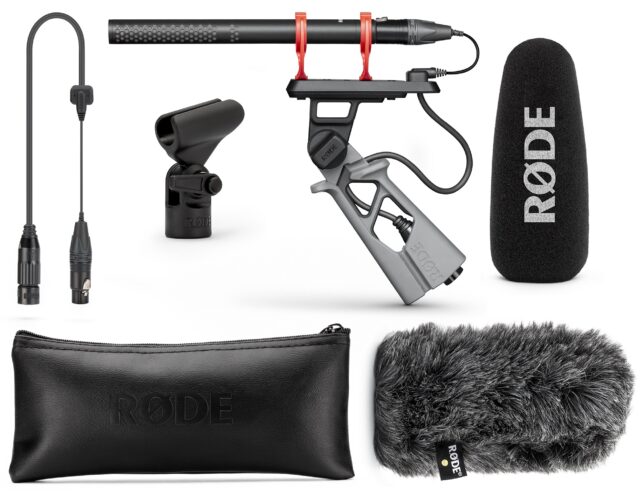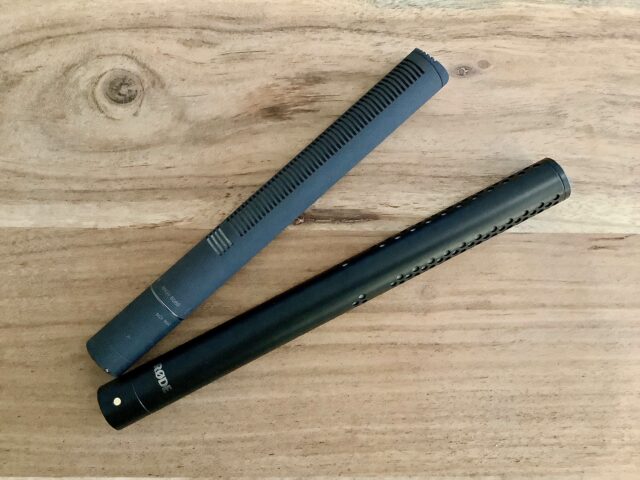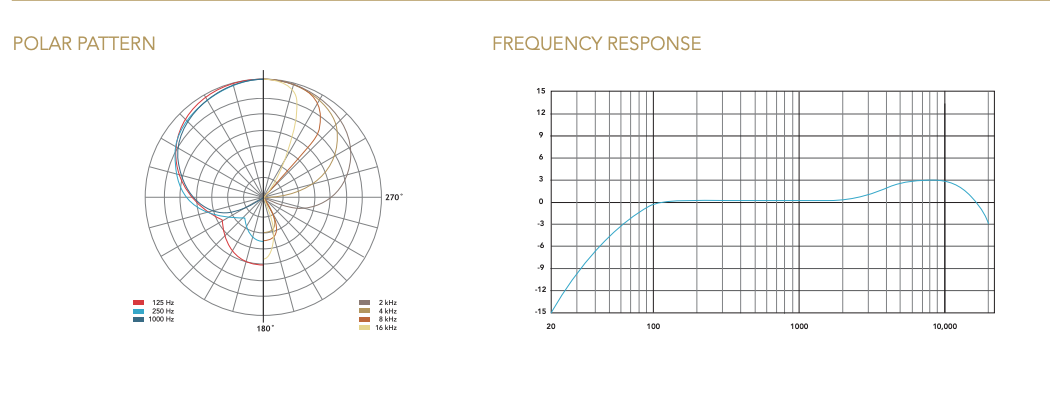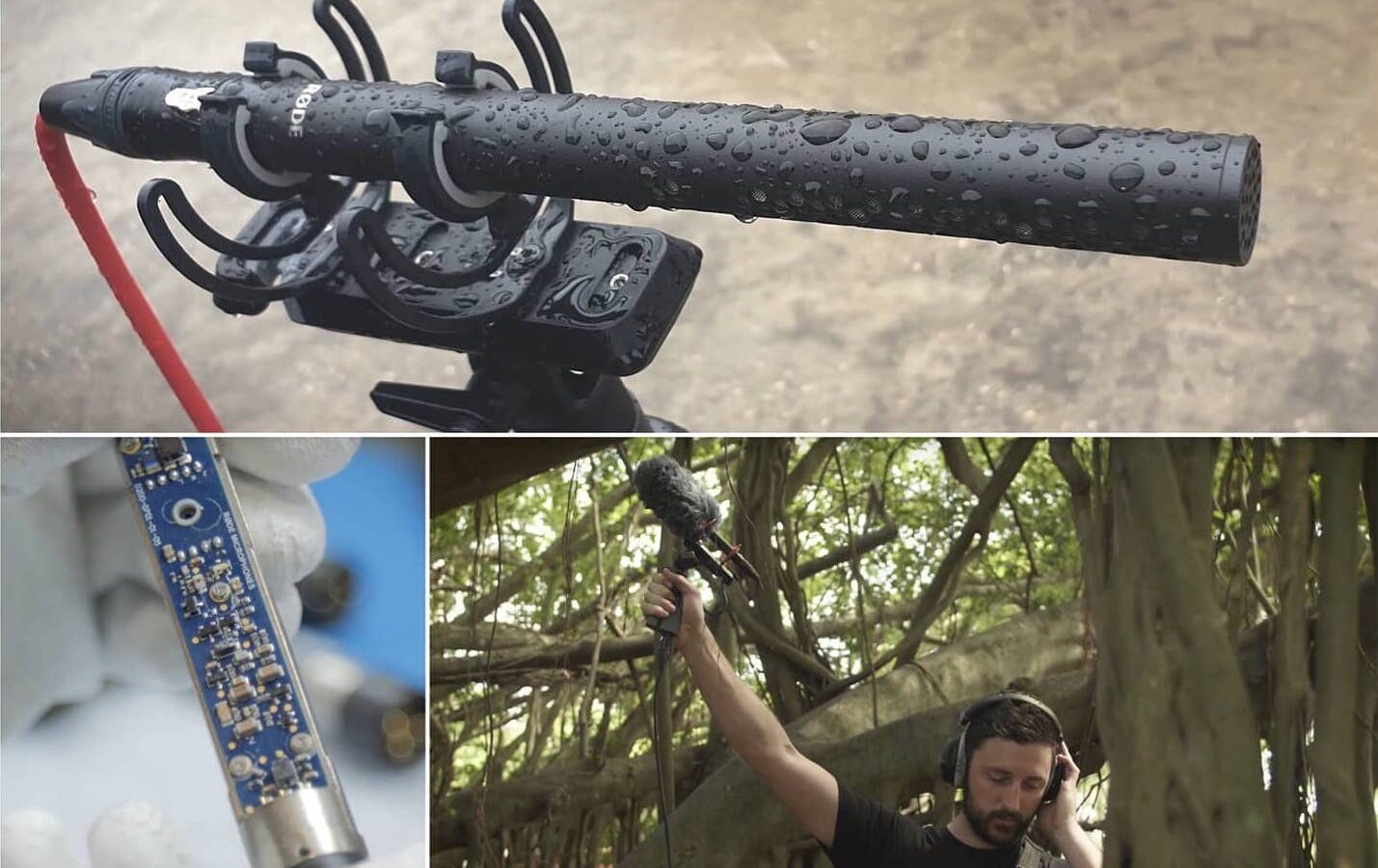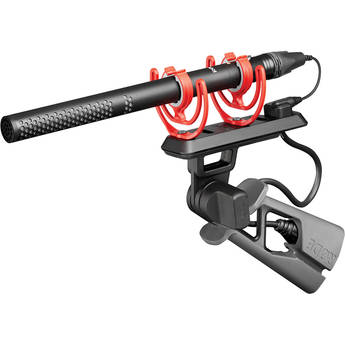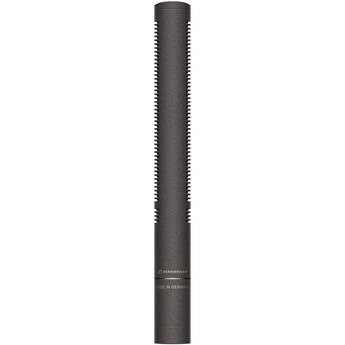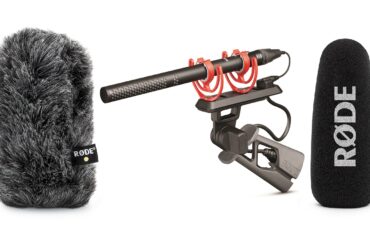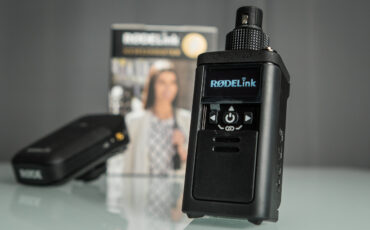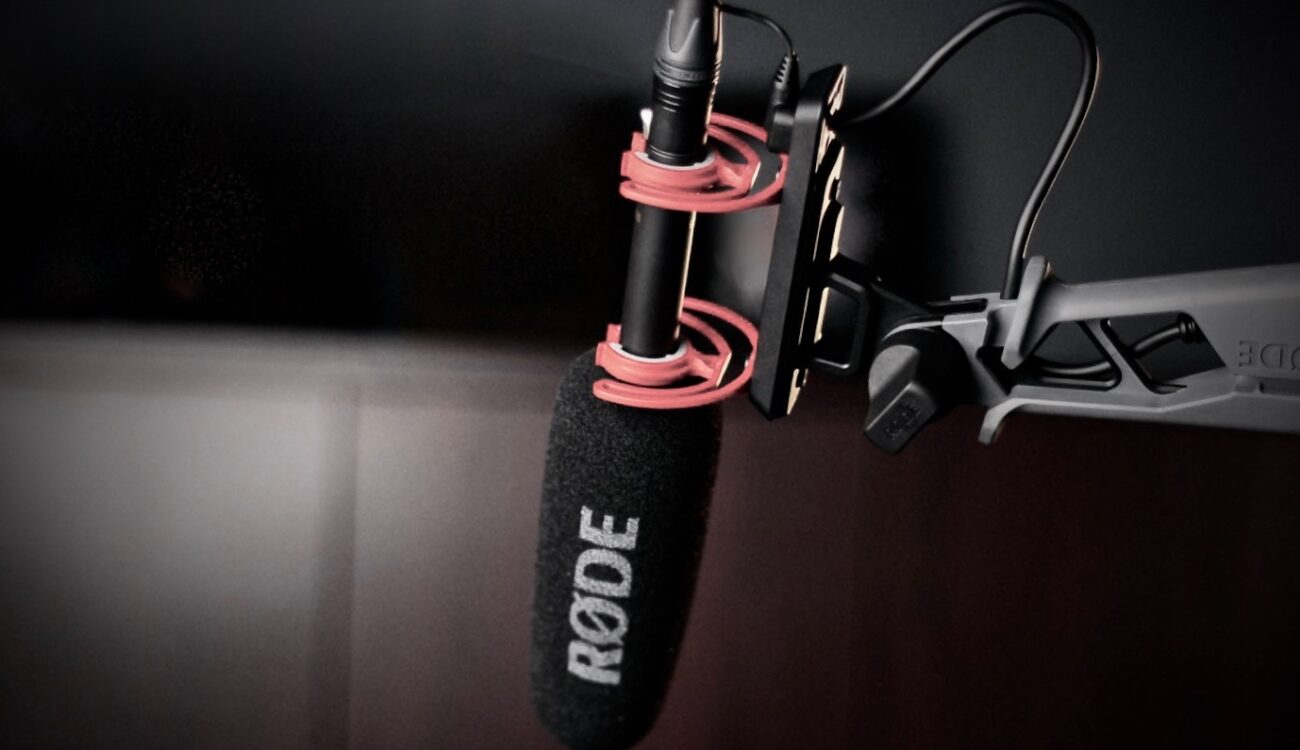
After the big success of RØDE NTG3 Shotgun Microphone, Rode has challenged themselves for smaller and more affordable, and here it is – read our RØDE NTG5 review.
Smaller, lighter, better? RØDE NTG5
The RØDE NTG5 is a short shotgun microphone from the Australian microphone Manufacture RØDE. In comparison to the NTG3, the new NTG5 is about 50mm shorter than the NTG3, in total it’s 203mm long. It weighs only 76g, that’s almost half the weight of NTG3. But surprisingly, it costs 20% less with a whole accessory kit included. These factors make the NTG5 seem too good to be true, so we took a closer look.
The new NTG5 in its black coating looks very robust, it feels very good in the hand and well built. The Aluminum body helps to reduce weight. The new design of the acoustic tube looks advanced and should provide better frequency response to the microphone. Besides that, the black design matches with the RØDE VideoMic NTG, the NT-SF1 Ambisonic and the RØDE TF-5 Pencil Microphone perfectly. I guess this is a new image that Rode wants to show to the customers: black, cool, simple, and robust.
In the Box is also a pistol grip shock mount and an XLR cable with “connbox” design, a simple microphone clip mount, a foam windshield, a WS10 “softie” style windshield, and a small pouch bag to protect the mic from transport. All these accessories are well built, feel very robust in the hand, and I found that they can even handle some extreme situations.
How to Start a Podcast
- What is RF technology?
RF stands for radio frequency; this kind of technology is also called HF-High frequency technology. In contrivers to the AF – audio frequency or LF – low-frequency technology, the capacitance variations of the condenser capsule are not converted directly into audio signals but modulated by an oscillator generated high-frequency (radio frequency) signal with FM or AM modulation. This signal is then immediately demodulated and recreating the audio signal in very low impedance. We can simply understand this process as there’s an ultra-small wireless transmitter and receiver inside the microphone.
Because of the very low impedance, and low RF Voltage, RF condenser microphone can be used in damp weather conditions which could create problems in DC-Biased microphones. It also has much less interference to radio signal and is much more stable under extreme temperatures.
Spec Comparison to Sennheiser MKH-8060
The RØDE NTG5 has some very impressive specifications, which put it into the top range of microphones:
Just to give you an impression, we take the Sennheiser MKH-8060 as a comparison, which costs more than twice the price.
From paper, the RØDE NTG5 and Sennheiser MKH-8060 have both 25Ohm output impedance as they both are RF Condenser Microphones. The Maximum Sound Pressure Level of the RØDE NTG5 is 130dB SPL, which is 1 dB more than the Sennheiser MKH-8060, and the Noise Floor of the RØDE NTG5 is 10dB SPL (A-Weighted), which is 1 dB less than the Sennheiser MKH-8060. This means, the RØDE NTG5 can handle 1 dB louder, and has 1dB less noise. Even from psychoacoustic, the human ear can not hear the 1dB difference, but this tiny difference may make the RØDE NTG5 even work better in some extreme situations.
Furthermore, the current consumption of RØDE NTG5 is 2mA at 48V Phantom Power, which is 1.3mA less than the Sennheiser MKH8060. Compared to the current consumption of a camera sensor and other parts, this is a very tiny amount, but if you are running this microphone with a mobile recorder such as Zoom H5, this may give you some extra minutes running time before its battery drains (mind you that this is a passive microphone, therefore the need for phantom power).
Here is the Polar Pattern and the Frequency Response of the RØDE NTG5
How is the Sound?
Specifications do not mean everything. Now, coming to the most important part: sound!
Sound is a very subjective judgment, and everyone has their definition of “natural-sounding” or “warm sounding” microphone. But there’s also a kind of “industry standard” for sound, which is what you hear every day from TV and in the cinema. Therefore, you will mostly see Sennheiser, Schoeps, DPA or RØDE microphones chosen by audio professionals and filmmakers, for two reasons: first, people in audio postproduction are much more familiar with the sound of these microphones and know much better how to deal with them. Second, the ear of the audience is much more trained for the sound from these microphones.
Back to our RØDE NTG5 review: through the years, RØDE has established their microphones in the entry- and mid-level market. Almost every filmmaker and audio professionals has heard of or even used their microphones. The RØDE NTG3 was one of the most popular shotgun microphones in its price range. With the experience they have, and the industry-proven sound quality, I doubt that for the price, there will be a better choice as the RØDE NTG5.
How does the RØDE NTG5 sound compared to the Sennheiser MKH-8060?
The Sennheiser MKH-8060 is the latest member of the legendary MKH family. The MKH-416 shotgun microphone has been THE industry standard for many decades. As I was considering using the Rode NTG5 as a backup and on-camera microphone for my Sennheiser MKH-8060, I tested the RØDE NTG5 side by side with my Sennheiser MKH-8060, both in the studio and in the field.
Off-axis Sound
The focus of my test was the off-axis coloration of sound, and how the microphone works on a real film set. Sounding good in perfect angle and distance is not enough for a good all-around short shotgun microphone. Much more critical is the sound coming from off-axis. When the microphone is mounted on-camera, the sound source comes often from off-axis. A good all-around shotgun microphone sounds only a little “faraway” and “quieter”, without color the sound and losing many details.
Audio Comparison Clips
You can hear the comparison audio clips here:
- Sound comparison
This is a pure sound comparison between the Sennheiser MKH-8060 and RØDE NTG5. They both directly connected to a Zoom H-5 handheld recorder and set at the same distance to the sound source. The sound source started in front of the microphone and moved in circles around the microphone.
Here are the audio clips, you can hear the difference and judge which is better for your ear. For me, the MKH-8060 has a little less coloration off-axis, but the NTG5 seems to have a little better rear sound rejection. They both sound very good, and very similar when the sound source is in front. - In the field – real-life test
I used the microphone as my main shotgun microphone for some documentary shootings. With situations like rainy weather and dust, just as expected, the NTG5 worked perfectly in a rainy, humid, and dusty environment.
In one scene, the microphone was very close to an induction cooking plate. As the induction plate started with full power, some interference happened with the microphone.
But except this small noise interference, the NTG5 worked perfectly under different weather situations during my real-world test. It sounds very close to the Sennheiser MKH-8060, which made it very easy for me to judge if my boom was pointing at the talent 100%. The small size and light weight made it easier to hold during longer interviews on a boom pole. I can be relaxed during rainy days on outdoor locations as the microphone is rain and dust resistant.
Some Downsides of the RØDE NTG5
Lots of good things about the RØDE NTG5, there is also something you need to know before making your final decision.
Aluminium built, sensitivity to handling noise
The microphone is made from aluminium, which means it can still have some RF interferences in extreme situations. Because of the very light-weight short body design, the microphone is more sensitive to handling noise, which could be a problem in some situations.
Plastic pistol grip
The pistol grip is made from plastic, which can only provide some isolation of handling noise, in my test with a professional boom pole, it catches more handling noises in higher frequency range compared to the Cinela Pianissimo Suspension system (but the Cinela Pianissimo Suspension system costs almost $1000 alone without a microphone).
Wind sensitivity
And because of the high sensitivity and short body design, the microphone is very wind sensitive. If you are shooting outdoors, you need to have some good wind protection (the foam windscreen is only enough for indoor situations, but as there’s a RØDE WS10 Furry Windshield included in the package, no need to worry in this point).
Conclusion – NTG5 Review
After many tests and the comparison to Sennheiser MKH-8060, both looking at the build quality and the sound quality, the RØDE NTG5 Microphone a real no-brainer in its price range. RØDE has made another product that could become an industry-standard with an unbelievable price for the market. This microphone is, for now, THE BEST all-around short shotgun microphone in its price range we know of. With the NTG5, RØDE has shown us that it is possible to make a very very good shotgun microphone at a really affordable price.
Tell us what’s your experience with the RØDE NTG5 and other RØDE microphones. And if you are considering purchase one, what else would you like to know about the NTG5? What do you think about our NTG5 review?
